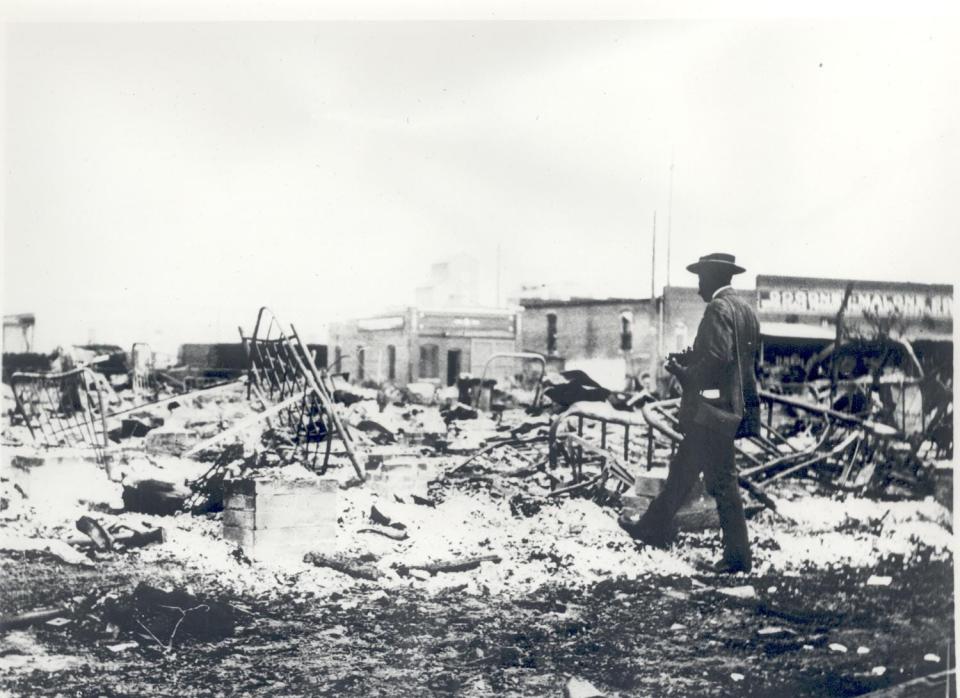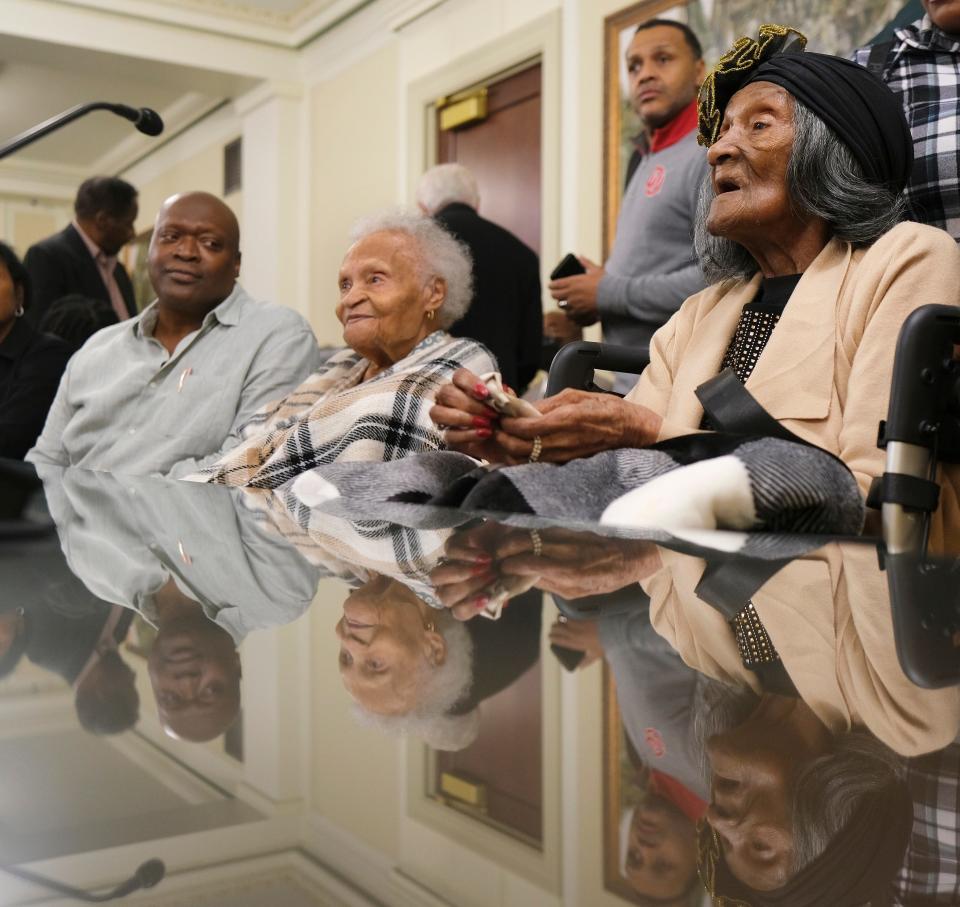Tulsa Race Massacre lawsuit struck down: What we know
Advocates hoped to see "justice in their lifetime" after the Oklahoma Supreme Court dismissed a lawsuit brought by survivors of the Tulsa Race Massacre. The suit sought reparations for survivors of one of the worst single acts of violence against Black people in American history.
Here's what to know about the lawsuit, the massacre, and advocates' efforts for recognition.
What was the Oklahoma massacre?
On May 31, 1921, a young Black man named Dick Rowland was accused of assaulting a white woman named Sarah Page. According to the 2001 Tulsa Race Riot Commission, the pair likely knew each other, and an investigation by the commission found Page made no allegations of assault against Rowland.

An aggressively written article and out-of-control rumors spurred a confrontation between armed mobs. The sheriff had barricaded Rowland inside the top floor to keep the mobs away from him. When shots rang out, people began to retreat.
Overnight, white rioters looted and turned 35 city blocks to smoldering rubble and ash. The burning that took place in Tulsa in 1921 destroyed 1,256 homes and 191 businesses.
Official counts at the time only recorded 36 deaths, but historians now believe the toll to be closer to 300. The Red Cross reported that more than 10,000 people were left homeless. This marked the first time that bombs were dropped on American soil.
What happened with the Tulsa Race Massacre survivors' lawsuit?
The lawsuit, filed in 2020, stated that the 1921 Tulsa Race Massacre represented an "ongoing public nuisance," to survivors Viola Fletcher, Lessie Benningfield Randle, and Hughes Van Ellis Sr. The lawsuit also said the destruction of what had been America's most prosperous Black business community continues to affect Tulsa.
Van Ellis died last year at 102 and his estate represents him on the case.

In the original suit, survivors alleged that they "continue to face racially disparate treatment and City-created barriers to basic human needs" because of unjust actions carried out by the city of Tulsa, police and military after the massacre, according to the original suit.
Survivors also alleged that the defendants took the name "Black Wall Street" and used it as marketing and tourism material for the City of Tulsa without giving anything back to the community.
Tulsa County District Court Judge Caroline Wall dismissed the lawsuit last year, and survivors appealed to the state’s high court.
On Wednesday, the Oklahoma Supreme Court affirmed Wall's decision in an 8-1 vote, effectively ending any further attempts by survivors' attorneys to seek reparations..
“With respect to their public nuisance claim, though Plaintiffs' grievances are legitimate, they do not fall within the scope of our State's public nuisance statute,” Vice Chief Justice Dustin P. Rowe wrote.
What is Black Wall Street? Is it nationally recognized?
Today, a movement pushes forward to recognize the Greenwood District as a national monument and memorialize its history. Black Wall Street was the moniker given to the Greenwood District after its residents found success in the oil industry. It was one of the most affluent Black communities in the country. U.S. Sen. James Lankford authored a bill for the national recognition of the site.
More: From Black Wall Street to George Floyd, the echoes of trauma shape Black Americans' reality
What's next?
The survivors' legal team released a statement stating that the "suit seeks to remedy wrongful acts perpetrated by a white mob against Black people – the court system is the very place where such harms are meant to be remedied."
The team hopes to file a petition for rehearing by the court. Under the 2007 Emmett Till Unsolved Civil Rights Crime Act, they plan to ask for an investigation into the massacre itself.
This article originally appeared on Oklahoman: Tulsa Race Massacre lawsuit: What happened? What's next

